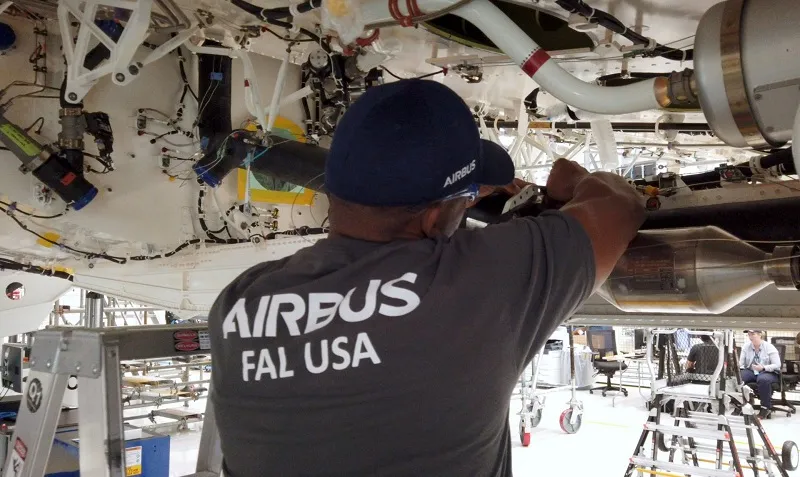
Bombardier considers exit from A220 partnership
Jan 17, 2020

Bombardier is reportedly contemplating a potential exit from its partnership in the A220 aircraft program, which it originally developed in collaboration with Airbus. The decision comes amid ongoing financial challenges and a strategic shift towards focusing on its core business in business jets. By distancing itself from the A220, Bombardier aims to redirect resources and investments to more profitable ventures. This move could reshape the dynamics of the A220 program, which has seen increased interest and orders since Airbus took control. The outcome of this consideration remains uncertain as Bombardier evaluates its future direction in the aerospace sector.
Bombardier's Strategic Shift: A Closer Look at the A220 Partnership
In recent developments, Bombardier has been contemplating its future with the A220 aircraft program, which has raised eyebrows across the aviation industry. The company has reportedly considered exiting its partnership with Airbus regarding the A220. This decision comes as Bombardier aims to streamline its operations and focus on its core business segments. The implications of this potential exit are significant, affecting not only Bombardier but also the global market for regional jets.
The A220 Aircraft: A Brief Overview
The A220, originally developed by Bombardier as the CSeries, is a family of narrow-body aircraft designed to serve the regional and low-cost airline markets. With a capacity of 100 to 150 passengers, it has been praised for its fuel efficiency and advanced technology. The partnership with Airbus has been instrumental in the aircraft's success, providing the necessary resources and distribution network to compete against larger players in the market.
Reasons Behind Bombardier's Consideration to Exit
Several factors are influencing Bombardier's contemplation of exiting the A220 partnership:
| Factor | Description |
|---|---|
| Financial Performance | Bombardier has experienced fluctuating revenues and may aim to focus on more profitable ventures. |
| Operational Focus | The company is shifting towards business jets and rail transport, which align better with its long-term strategy. |
| Market Dynamics | The global aviation market is evolving, and Bombardier may want to adapt to these changes independently. |
The Impact on the A220 Program
If Bombardier proceeds with its exit, the A220 program could face several challenges:
- Production and Supply Chain: Bombardier’s withdrawal could disrupt the established supply chain and production processes, potentially leading to delays in aircraft delivery.
- Market Competition: Without Bombardier's support, the A220 might struggle to compete against other regional jets and the offerings from Boeing, which could affect its market share.
- Financial Implications: The financial health of the A220 program could be jeopardized, possibly leading to reduced investment in future aircraft development.
Airbus's Response and Future Plans
Airbus, as the primary stakeholder in the A220 program, is likely to respond strategically to Bombardier's considerations. The company has been investing heavily in the A220's development and marketing, recognizing its potential in the regional aircraft sector. Airbus may explore several options:
| Option | Description |
|---|---|
| Increased Ownership | Airbus could consider increasing its stake in the A220 program to ensure its success and continuity. |
| Partnerships and Collaborations | Seeking new partnerships with other manufacturers or suppliers could help mitigate the impact of Bombardier's exit. |
| Marketing Strategy | Enhancing the marketing strategy to promote the benefits of the A220 could attract more customers and secure orders. |
Conclusion: A Balancing Act for Bombardier
As Bombardier considers its exit from the A220 partnership, the company finds itself at a crossroads. The decision involves weighing the benefits of remaining in a competitive market against the desire to concentrate on its core business areas. While the A220 has shown promise, Bombardier must evaluate whether this partnership aligns with its long-term objectives.
Ultimately, the future of the A220 program will depend on the decisions made by Bombardier and Airbus in the coming months. As the aviation industry continues to recover from the impacts of the pandemic, the dynamics of partnerships and collaborations will play a crucial role in shaping the future of aircraft manufacturing.
In conclusion, Bombardier's potential exit from the A220 partnership is not just a corporate decision; it is a reflection of the broader trends and challenges faced in the aviation sector. Stakeholders and industry experts will be watching closely as this situation unfolds, understanding that the repercussions will resonate across the market.
Related Articles

Explore Thailand: The Best Islands to Visit for Paradise, Adventure, and Relaxation

The Ultimate Guide to the Best Islands in Thailand for Your Next Getaway

Do babies need passports? How to get a passport for a newborn

How to get a U.S. passport fast: here’s how to expedite the process

What is Mobile Passport Control: 5 reasons why you should use it

SENTRI vs. Global Entry: A detailed guide

Do you need a passport to go to the Bahamas? Let’s find out

Do you need a passport to go to Mexico? A detailed guide

Do you need a passport to go to Canada? We got the answer

Do You Need a Passport for a Cruise: An Essential Travel Guide

Booster Seat Requirements: All the Rules to Follow in Your Rental Car

What Are the World’s Most Powerful Passports, and How Does Yours Rank?

How to Take a Passport Photo at Home: A Helpful Guide

You've got to have heart! Southwest's new livery

Your opinion: Should water be free on low cost carriers?

Young women bolder than guys as solo travellers
